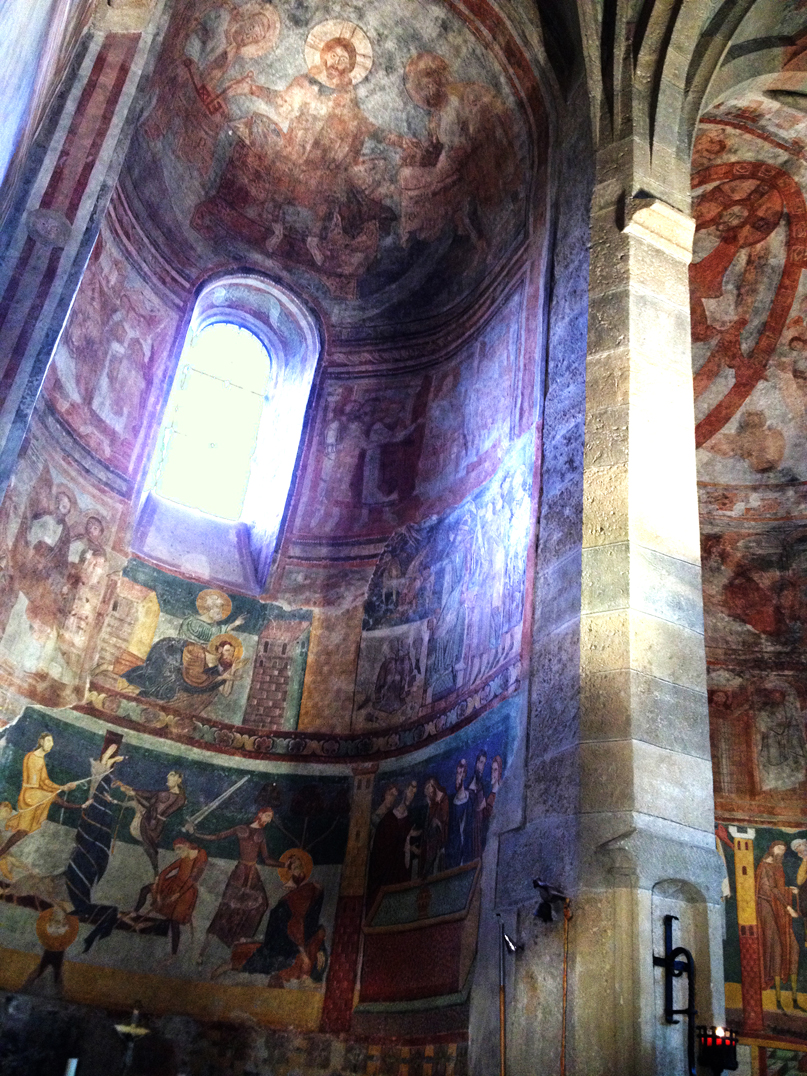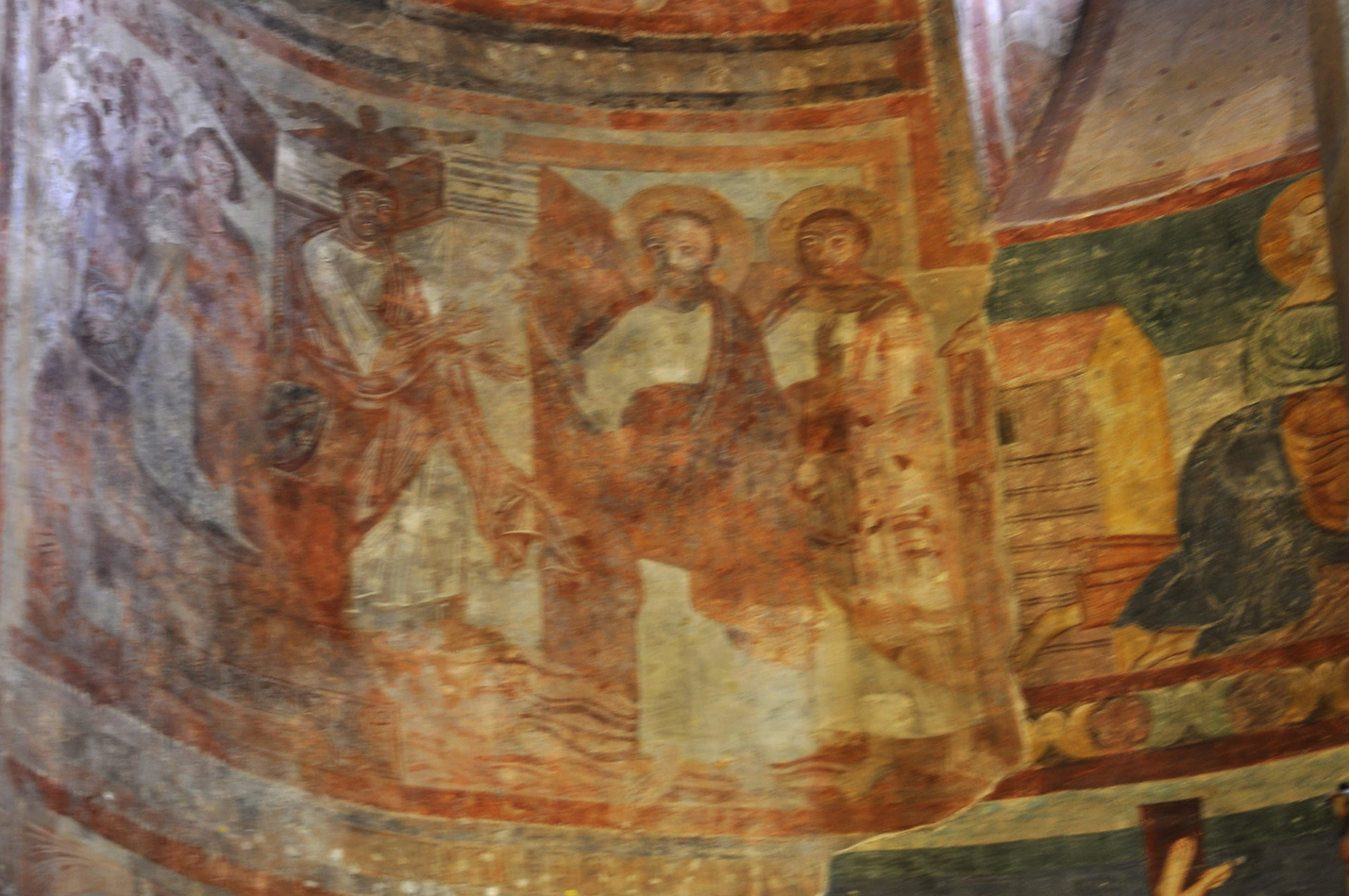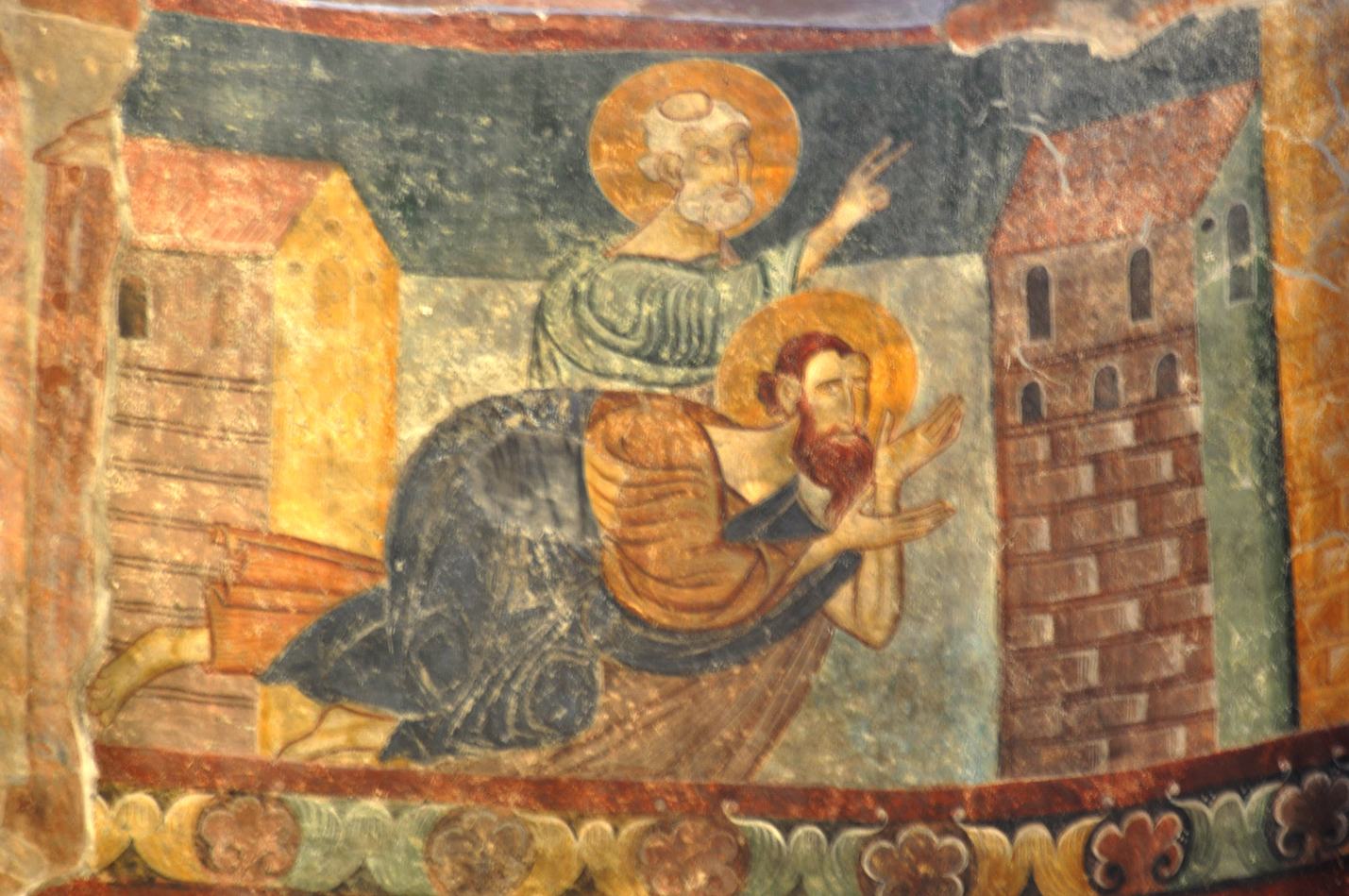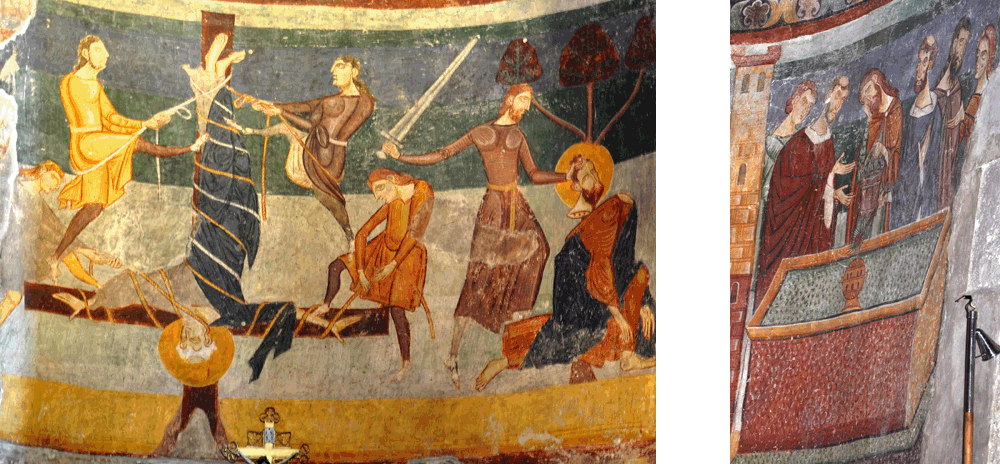



The Lives of Saints Peter and Paul
Circa 800 and Circa 1200
Fresco
St. John's Convent Church, Müstair, Switzerland
In the Carolingian era, about 800, the entire apse was painted with images from the lives of Saints Peter and Paul. In the Romanesque period, about 1200, it was plastered and given a new set of frescoes on the same subject. With the passage of time, much of the Romanesque plaster fell away, exposing the Carolingian layer. In the photo at left the fainter, redder parts are from Carolingian and the fresher ones Romanesque.
In the dome we see
a Traditio Legis image, with Christ giving the Law to Paul on his left and the "keys of the kingdom" to Peter on his right. The register below the dome is too faint to make out in this photograph and my notes do not clarify what it represents.
The next register down gives a good idea of how closely the Romanesque frescoes followed the Carolingian originals. On the left (second photo on this page), the Carolingian image shows Paul and Peter disputing with Nero about Simon Magus, who may be the figure to the left of the seated Emperor. On the right (third photo), the story continues with the Romanesque representation of Simon's fall from the tower. The figure of Simon has crumbled away, but the subject can be ascertained from the postures of the two saints, which reproduce those in
an intact image
in St. Mark's, Venice, where Paul kneels in prayer as Peter adjures the demons to let Simon fall.
The bottom register (last photo on this page) has
the death of the two saints in the center
and a burial on the right. The left panel is lost (if there was one: the center panel may have extended all the way to the left). Given the wall-like structure that separates the right panel from the center, the burial may be of Paul, of whom one of the soldiers says in the Legend, "He lieth without the town with one of his fellows." If it is Peter, then the two figures closest to the sarcophagus would be Marcellinus and Apuleius, the disciples who in the Legend "took off the body from the cross when he was dead, and anointed it with much precious ointment, and buried him honourably."
Read more about images of the Traditio Legis and about images of St. Peter and St. Paul.
Photographed at the church by Richard Stracke, shared under Attribution-NonCommercial-ShareAlike license.